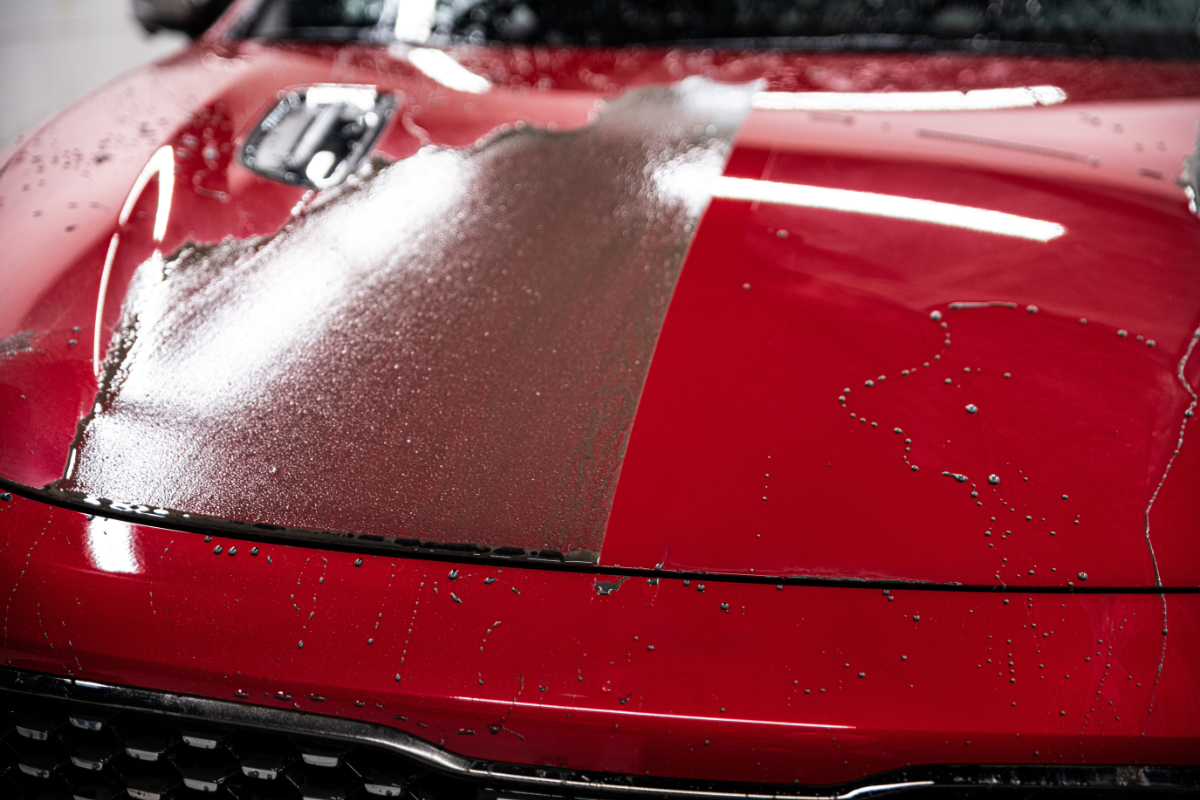Just How Ceramic Coating Philadelphia Conserves Time and Money on Maintenance
Wiki Article
Why Ceramic Covering Is the Ultimate Service for a Remarkable End Up
Ceramic finishing has emerged as a leading remedy for those looking for a remarkable surface for their cars, thanks to its amazing resilience and protective attributes. What aspects genuinely established ceramic covering apart?What Is Ceramic Layer?

When applied correctly, ceramic coating creates a hydrophobic surface that repels water and dust, making it much easier to maintain and clean up. Unlike traditional waxes or sealants, which generally provide brief protection, ceramic coverings can last for a number of years, relying on the item quality and application method. The process of applying ceramic covering requires careful prep work, consisting of complete cleaning and in some cases paint modification, to make certain optimal bonding and performance.
Ceramic finishings are not restricted to automotive surfaces; they can also be made use of on numerous products, including glass, metal, and plastics, giving a functional solution for boosting protection. On the whole, ceramic covering represents a substantial innovation in surface area defense technology, combining both aesthetic and useful advantages for a large range of applications.
Benefits of Ceramic Finishing
While several surface defense options exist, the benefits of ceramic layer stand out because of its distinct buildings and long-lasting performance. Among the primary advantages is its extraordinary resilience. Ceramic Coating Philadelphia. Unlike typical wax or sealants that require constant reapplication, ceramic coatings offer a resilient layer that can last for a number of years, dramatically lowering upkeep initiativesAnother significant benefit is enhanced protection versus ecological pollutants. Ceramic coverings create a hydrophobic surface that drives away water, dust, and numerous contaminants, making it simpler to cleanse. This attribute not only maintains the lorry's appearance yet also lessens the risk of rust and oxidation, especially in harsh climate condition.
Additionally, ceramic layers use exceptional resistance to UV rays, preventing fading and degradation of paint in time. This UV defense is important for preserving the aesthetic worth of cars and surfaces exposed to direct sunshine.
Additionally, the glossy surface attained with ceramic layer enhances the total aesthetic appeal, providing surfaces a showroom-quality shine. Generally, ceramic finishings represent a substantial innovation in surface area security technology, providing enduring benefits that accommodate both practical and aesthetic requirements.
How It Works
Understanding the scientific research behind ceramic finishes discloses exactly how they provide such impressive security and durability. At its core, a ceramic layer is a fluid polymer that chemically bonds with the automobile's factory paint. This bonding produces a safety layer that is both hydrophobic and oleophobic, repelling water, dust, and oil. The main part of most ceramic finishings is silicon dioxide (SiO2), which is originated from quartz. This substance adds to the layer's firmness and resistance to scrapes, UV rays, and ecological impurities.
The application process includes several steps, consisting of surface area preparation, which is crucial to attaining optimum attachment. When applied, get redirected here the covering undergoes a curing process, during which it solidifies and develops a semi-permanent bond with the paint surface. This bond is what distinguishes ceramic finishings from conventional waxes and sealants, providing a longer-lasting protective obstacle that can endure for many years.
Moreover, the density of the finish can improve its safety high qualities, guaranteeing that it can withstand harsh conditions. Ultimately, the scientific research of ceramic coatings integrates sophisticated products with ingenious application techniques to deliver an exceptional level of defense and aesthetic enhancement for lorries.
Contrast With Conventional Approaches
When contrasted to traditional paint security methods such as sealants and waxes,The benefits of ceramic finishes become especially evident. While waxes provide a short-term sparkle, generally lasting a few weeks to a number of months, ceramic coatings provide a long-lasting safety layer that can withstand for several years. This sturdiness substantially minimizes the frequency of reapplication, making ceramic layers a much more cost-efficient service gradually.Additionally, typical techniques usually require substantial preparation and numerous applications to achieve an adequate degree of defense. On the other hand, ceramic layers bond at a molecular level with the car's surface area, developing a durable guard versus ecological impurities like UV rays, acid rainfall, and roadway salts. This bond enhances the car's resistance to scrapes and swirl marks, which prevail with traditional waxes and sealants.
Additionally, the hydrophobic homes of ceramic finishes ward off water and dust, bring about easier cleaning and maintenance. On the other hand, wax and sealant-treated surfaces can attract gunk, demanding even more constant cleaning - Ceramic Coating Philadelphia. Generally, recommended you read ceramic coatings not just provide premium security however additionally provide an extra visually appealing and enduring surface, developing them as the favored option for critical lorry owners
Application and Upkeep Tips

Making use of a foam applicator, use the covering in tiny areas, adhering to the producer's guidelines pertaining to thickness and overlap. Enable enough treating time in between coats, typically 24 hours, to guarantee correct bonding. After application, it is essential to prevent direct exposure to water or harsh elements for at the very least a week to allow the covering to totally heal.
Additionally, making use of a ceramic maintenance spray can enhance the finishing's hydrophobic buildings and longevity. Regular inspections for any indicators of wear will certainly aid keep the layer's integrity and protect that excellent surface.
Final Thought
In verdict, ceramic finishing arises as a remarkable choice for achieving a flawless automotive coating. By forming a durable bond with manufacturing facility paint, ceramic finish efficiently guards against scrapes, UV rays, and ecological contaminants.
Report this wiki page